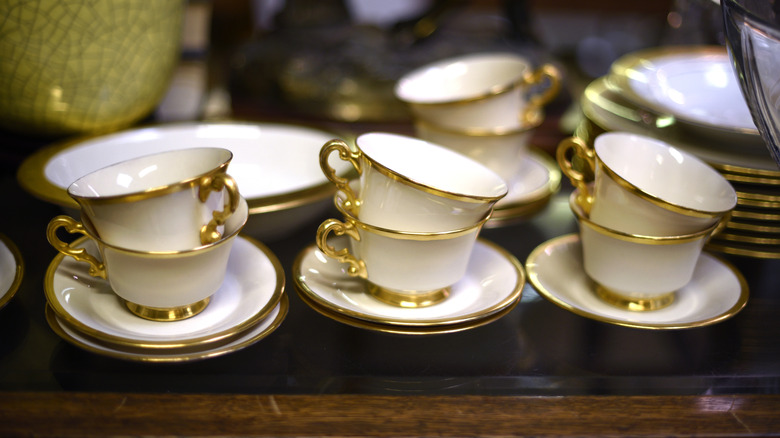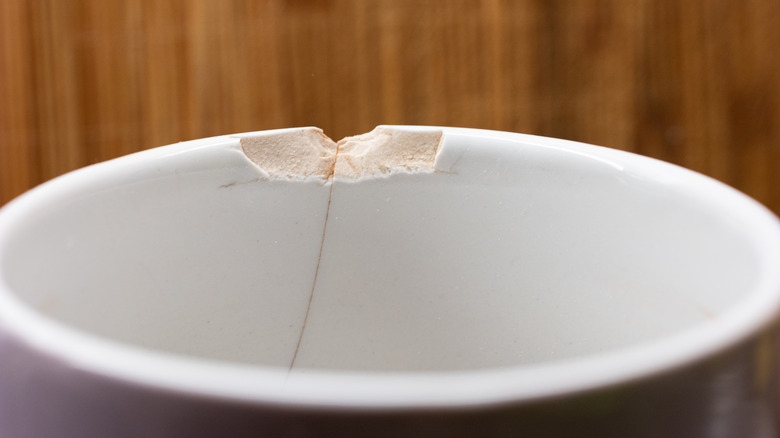How To Properly Clean Vintage Dishes Without Ruining Them
We may receive a commission on purchases made from links.
You should wash brand-new dishes before using them, and you really have to wash vintage dishes before using them. However, from the very first wash, vintage dishware requires a different level of care than modern dishes. Keep these well-loved serving pieces looking and performing their best by avoiding the harshness of a dishwasher, and hand-washing them after each use. But before you jump right in, make sure your sink is clean and lined with a towel or rubber mat to prevent any chips, should the dish get dropped or bumped.
Clean your dishes one at a time with either a soft sponge or a microfiber towel using a gentle soap. Avoid anything with lemon, as the acidity will be too harsh for vintage dishes. After thoroughly rinsing the dish with warm water, lay it upside down on a towel to air-dry. Or, if you'd rather dry as you go, be sure to use a soft towel that won't leave any streaks or lint residue. If you spot a stain while cleaning, don't jump to harsh chemicals to get rid of it; mix a little water with baking soda until you get a paste-like texture, then gently rub it on the stain. You can also use baking soda and vinegar paste (white vinegar is best) to remove discolorations.
Things to look out for when washing vintage dishes
Whether you're adding to your personal collection or are a collector of vintage dishware that could be worth big bucks, there are several things to watch out for when cleaning antique dishes. Over time, vintage glassware can develop a film that makes the surface appear cloudy. This film can usually be washed away or lessened by soaking your glass in a mix of water and white vinegar for a few hours.
As you wash your dish, make sure to check closely for any cracks or chips. In 1978, lead-based paint that could be potentially leach into foods was banned. But dishes that were made before this date didn't have to meet these standards. While it's still possible to use dishes before the late '70s, any chips, cracks, or other signs of deterioration could signal a potential for lead to leach into food or drinks. If you're not sure when your dish was made, or if it contains lead, you can verify your dishware using the AAWipes Lead Test Kit to sample multiple surfaces. Even if your dishes were made after the lead paint ban, it might be best to throw out cracked dishes altogether, as they create the perfect home for harmful bacteria that no one wants on their plate.

